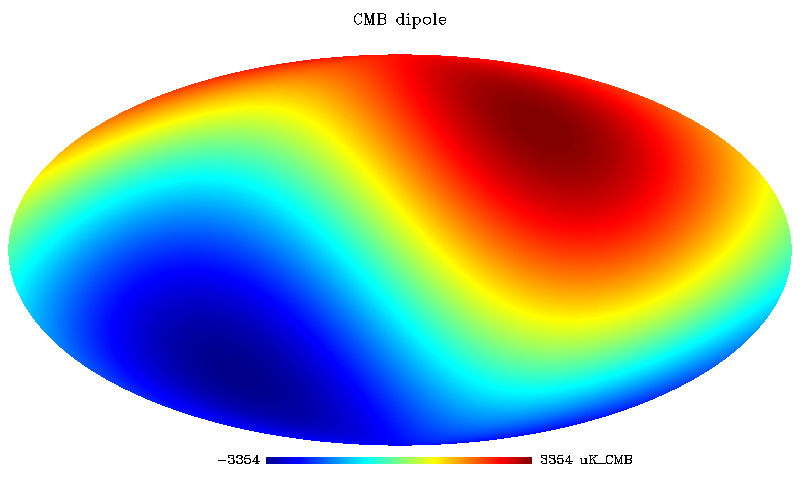Re: APOD: CMB Dipole: Speeding Through the... (2022 Apr 03)
Posted: Sun Apr 10, 2022 11:52 pm
Hi Ann,johnnydeep wrote: ↑Sun Apr 10, 2022 2:44 pmI'm still trying to digest alter-ego's posts - which are giving me heartburnAnn wrote: ↑Sun Apr 10, 2022 9:28 am Maybe I get a little bit of what you are saying, alter-ego.
If I get you correctly, the reason why the redshift increases so enormously the closer we get to the Big Bang is that the Universe underwent this incredible exponential growth spurt called inflation, and when that epoch was over the Universe was "braking hard". Instead of increasing exponentially in size "indefinitely" (wonder what that would have led to?) the Universe settled down, expanding very moderately.
During the epoch of inflation (and, in fact, during the epoch of "braking hard" after the inflation), the redshift changed dramatically, simply because of how much the actual growth of the Universe changed in a short time.
We are now in an epoch of acceleration. However, the acceleration has not "picked up speed" yet, and it has not yet affected the size of the Universe very much. Therefore, we are located in a "redshift valley", where the redshift stays relatively constant over billions of light-years.
Is that correct?
Ann- but inflation happened long before the universe became transparent to radiation (at about 380000 years). From Wikipedia:
And a little later:https://en.wikipedia.org/wiki/Big_Bang#Inflation_and_baryogenesis wrote:Inflation stopped at around the 10−33 to 10−32 seconds mark, with the universe's volume having increased by a factor of at least 1078.
I would think that T=0 for all redshift calculations starts at the "recombination" mark at 379000 years. Or I supposed it would actually be at the "decoupling" mark "shortly afterward". Again from Wikipedia:As the universe cooled, the rest energy density of matter came to gravitationally dominate that of the photon radiation. After about 379,000 years, the electrons and nuclei combined into atoms (mostly hydrogen), which were able to emit radiation. This relic radiation, which continued through space largely unimpeded, is known as the cosmic microwave background.[36]
https://en.wikipedia.org/wiki/Cosmic_microwave_background wrote:Cosmologists refer to the time period when neutral atoms first formed as the recombination epoch, and the event shortly afterwards when photons started to travel freely through space is referred to as photon decoupling. The photons that existed at the time of photon decoupling have been propagating ever since, though growing less energetic, since the expansion of space causes their wavelength to increase over time (and wavelength is inversely proportional to energy according to Planck's relation). This is the source of the alternative term relic radiation. The surface of last scattering refers to the set of points in space at the right distance from us so that we are now receiving photons originally emitted from those points at the time of photon decoupling.
• Yes, the nature of the Big Bang means expansion was very fast at the start because the Universe started from an unknown, but very
small size.
• Moving forward to when acceleration started, our local spacetime neighborhood (z ~ 0) was in the middle the valley about 6 Gyr ago. So yes, given
the lengthy stay in that valley, I'd agree with you that we are certainly early in the acceleration phase. Keep in mind even though were just
beginning to "pick up speed", cosmic expansion is already at quite a clip. We already have a limiting event horizon ≈ 16 Glyr (i.e. light leaving a z = 1.75 star today will never reach us) Fortunately, the present ΛCDM model predicts the Hubble Constant will not increase, the so-called Big Rip should not happen, but the Big Freeze is currently the likely outcome. If so, someday in the far future, the view of that universe may only be the gravitationally bound galaxies within our local group.
Johnny,
• My apologies for contributing to your heartburn
T = 0 is the BB for all practical purposes. Friedman equations are a currently a key part of the ΛCDM model and apply when the Universe was millennia old. They yield cosmic energy density evolution from Radiation (t = 1000 yrs) to Mass to Vacuum energy (t = indefinite future)
The bottom x-axis shows the redshift range modelled (Note: Subract 1 for actual redshifts), the top axis shows the time from the BB.
For z = 0, time = to = NOW = 13.7 Gyr. For z ≈ 100,000, time ≈ 1000 yrs!
When Mass begins to dominate over Radiation: teq ≈ 100,000 yrs, z ≈ 3200,
Onset of transparency within the Universe: trec ≈ 380,000 yrs, z ≈ 1100
Out of the many graphics, here's one that has details associated with the expansion:

